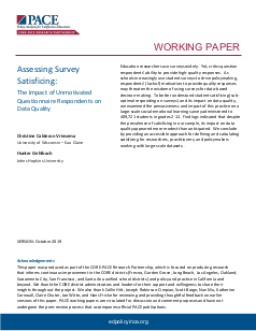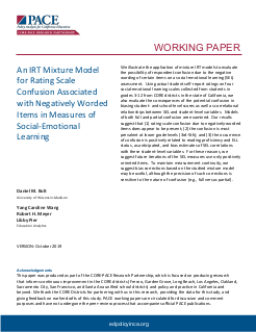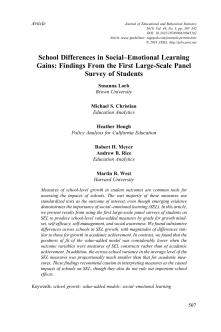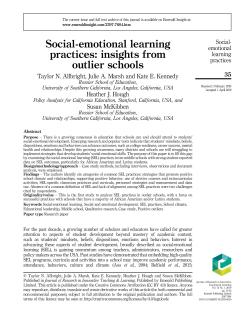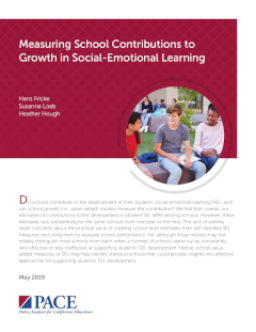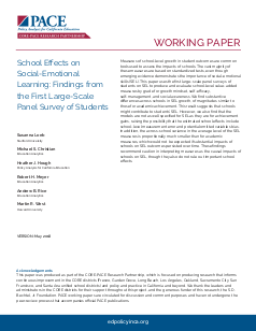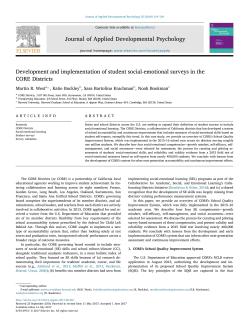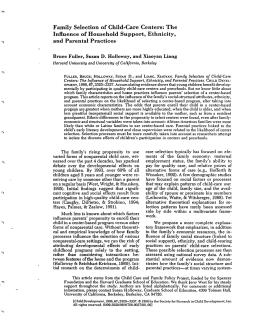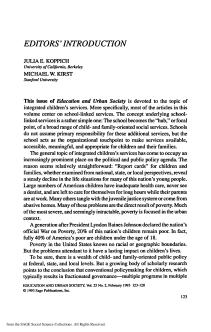The Impact of Unmotivated Questionnaire Respondents on Data Quality
Published
Summary
This paper investigates the effect of student satisficing, the act of providing suboptimal survey responses, on data quality in a large-scale social-emotional learning survey. The study examines the prevalence and impact of satisficing among 409,721 students and finds that its effect on data quality is less significant than expected. The paper offers a practical approach to defining and calculating satisficing, useful for researchers, policymakers, and practitioners working with large-scale datasets.
Published
Summary
This paper uses mixture IRT models to evaluate whether students experience confusion due to negative wording of items on a social-emotional learning assessment. It examines the consequences of confusion on student- and school-level scores and correlations with student-level variables, finding that confusion is present and most prevalent in lower grades, and is related to reading proficiency and ELL status. The study recommends the use of positively oriented items in future SEL measures, and suggests bias corrections based on the studied mixture model to maintain measurement continuity.
Findings From the First Large-Scale Panel Survey of Students
Published
Summary
This article discusses the use of standardized tests as the primary tool for assessing school-level growth in student outcomes, despite the emerging importance of social-emotional learning (SEL). It presents results from large-scale surveys of students on SEL constructs, and finds significant differences across schools in SEL growth, with magnitudes of differences similar to those for academic achievement. However, caution is recommended in interpreting measures as causal impacts of schools on SEL, as the goodness of fit of the value-added model was considerably lower for SEL measures.
Insights from Outlier Schools
Published
Summary
This paper explores social-emotional learning (SEL) practices in ten middle schools and their impact on students' outcomes. Despite the growing recognition of the importance of SEL, many schools struggle to implement effective strategies. The paper focuses on schools with strong student-reported data on SEL outcomes, particularly for African American and Latinx students.
Published
Summary
This report examines the stability of school effects on social-emotional learning (SEL) over two years in California's CORE districts. The correlations among school effects in the same grades across different years are positive but lower than those for math and ELA. While these effects measure real contributions to SEL, their low stability draws into question whether including them in school performance frameworks and systems would be beneficial.
Evidence from the CORE Districts
Published
Summary
This study examines how social-emotional skills develop from Grade 4 to Grade 12 and vary by gender, socioeconomic status, and race/ethnicity. Based on self-report student surveys administered to around 400,000 students in California, the study finds that social-emotional skills do not increase uniformly and vary across subgroups. Females have higher social awareness but lower self-efficacy than males. Economically disadvantaged students show improvement in high school. White students report higher social-emotional skills than African American and Latinx students.
Findings from the First Large-Scale Panel Survey of Students
Published
Summary
This paper examines the use of social-emotional learning (SEL) measures to evaluate school-level growth in student outcomes. The study finds substantial differences across schools in SEL growth, suggesting that schools may contribute to students' SEL. However, caution is recommended in interpreting measures as the causal impacts of schools on SEL due to potential measurement error and omitted variables bias.
Published
Summary
States and school districts across the U.S. are seeking to expand their definition of student success to include social-emotional learning. The CORE Districts, a collaborative of California districts that has developed a system of school accountability and continuous improvement that includes measures of social-emotional skills based on student self-reports, exemplify this trend. In this case study, we provide an overview of CORE's School Quality Improvement System, which was implemented in the 2015–16 school year across six districts serving roughly one million students.
The Influence of Household Support, Ethnicity, and Parental Practices
Published
Summary
An investigation of the family factors and practices that influence parents' choice of center-based programs for young children. Maternal education, child's age, and availability of social support were found to be significant factors in center selection. African-American families were more likely to choose center-based care than white or Latino families, and parental practices related to early literacy development and close supervision also affected center selection. The study highlights the importance of considering selection processes when assessing the effects of early childhood programs.
Editors' Introduction
Published
Summary
The concept of school-linked services is to make social services available to children and families through the school acting as an organizational touchpoint. This idea has become increasingly prominent due to the declining life situations of many American children, particularly those in urban areas, who face poverty-related issues like inadequate healthcare, juvenile justice involvement, and abusive homes.
Remembering the "Forgotten Half"
Published
Summary
US high school students, especially those who do not attend college, have been found to lack skills and knowledge necessary for the job market. The California Partnership Academies program has been developed to address this issue and has been adopted by over 50 high schools. The program has received support and positive evaluations. Factors contributing to the issue include societal changes, the education system, and changes in the labor market. If these issues are not addressed, the US risks falling behind international competitors and a lower standard of living.
